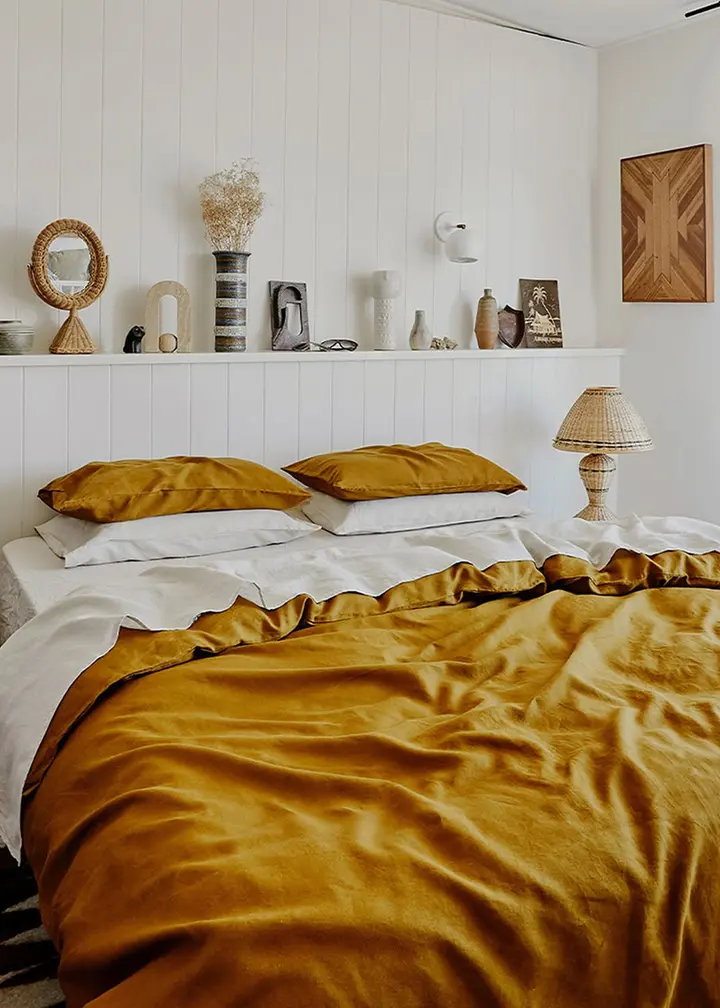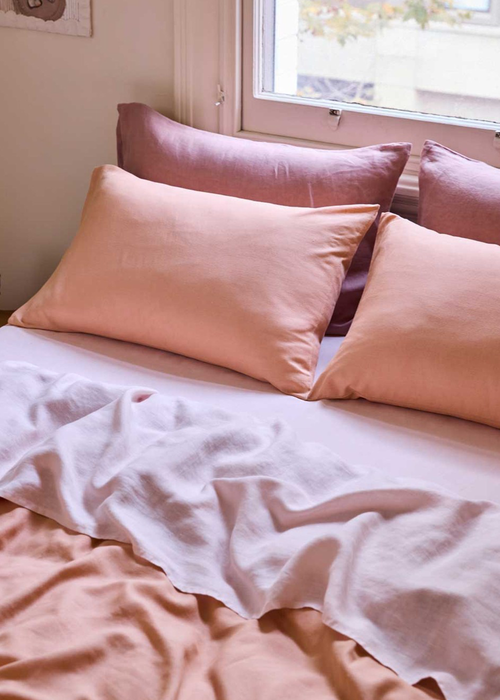
French or Belgian Flax Linen: Which One is Better For Sleeping?
To help you make the best decision on which one to invest in, here’s everything you need to know about the differences between French and Belgian linen.
We all know the benefits of sleeping in genuine, high-quality 100 per cent flax linen sheets. Linen is ultra-soft, durable, comfortable, allergen-free, highly absorbent and temperature regulating (so it’ll keep you warm during the cooler months and cool throughout the warmer months). Plus, it can transform any bedroom into a Pinterest-worthy space (with no ironing required).
But now you’ve settled on purchasing linen over all other materials, you’re stumped with another dilemma: Belgian or French flax linen - which one is better?
Flax is cultivated in many parts of the world, but the best flax grows along the famous Western Europe flax belt - a stretch of Europe that spans across Belgium, France and the Netherlands - so the main difference between Belgian and French linen is basically the country the flax originated from.
To help you make the best decision on which one to invest in, here’s a full rundown on everything you need to know about the flax plant, how flax is made and the differences between Belgian and French flax linen.
Firstly, what is flax linen?
Flax linen is a plant-derived material (yes, it's actually considered a vegetable) that originates from flax or linum usitatissimum. The cellulose fibre in the stem of the flax plant can be harvested and then spun to produce flax linen or to harvest flax oil. This cellulose fibre - commonly known as a ‘bast fibre’ - is a fibre that is recovered from the inner bark of a plant, similar to how we extract hemp and rattan.
How is flax made?
Flax harvesting is a slow, time-consuming process—it takes roughly 100 days to produce flax linen from seed planting to harvesting. Flax needs to be shallowly planted, in damp soil and only grows in cool temperatures. Once it turns yellow or brown, the flax is ready to harvest. At this stage, the woody bark that contains the cellulose fibres is chemically retted or decomposed using water in order to retrieve the useful part of the plant.
The flax plant is then squeezed, dried, combed and spun - a process through which the stronger or longer flax fibres - called line or dressed flax - are separated from the weak - called stricks. This separation is integral: the dressed flax will produce more luxurious, hardwearing linen.
Finally, these dressed flax are spun and dyed to produce your bed linen—a costly process in time and labour that reaps the ultimate reward.
What is French flax linen?
The flax used to make French linen is grown in France, which has a cool climate that is favourable to growing this crop. French flax sowing occurs between mid-March and mid-April, and French farmers have been perfecting this sowing process for thousands of years. What makes French linen superior to others like damask, sheeting or plain-woven linen is that it’s durable, softens with age and doesn’t require much care.
Here at Bed Threads, our signature flax is grown in France by registered farmers and suppliers, and is then turned into sets in China under ethical working conditions. If you’re a linen aficionado you’ll notice that our price points are incredibly attainable, too. Our view is simple: quality goods shouldn’t cost a fortune, and everyone should enjoy the luxury of a beautiful home.
Moreover, all of our pieces are OEKO-TEX 100 Certified (so, no nasty chemicals in any of your Threads) and dyed with eco-friendly dyestuff. We're also 100 per cent carbon neutral and all our packaging is plastic-free, so you can feel good about your eco-friendly choice every time your head hits the pillow.
What is Belgian flax linen?
Belgium - in particularly Flanders, the westernmost area of the country - has become famous for its linen production. Although it’s called Belgian linen, the term refers to linen that is grown and woven across Europe (not specifically in Belgium). One thing to keep in mind is that there's a difference between 'Belgian linen' and 'Belgian flax linen' (also called 'European flax linen'). 'Belgian linen' is made from flax grown, processed, spun and woven into fabric in Europe; whereas 'Belgian flax linen' is made from flax grown in Europe but sent to China or India for further processing, spinning and weaving.
Belgian linen crafted from 100 per cent natural linen has those same excellent qualities of breathability, durability, long-lasting and high absorbency like its French counterpart.
Is Belgian or French flax linen better?
Both Belgian and French flax linen are of superior quality, so regardless of which one you decide on, you can rest assured the two are harvested from the world’s famous flax belt. Since they are both regarded as superior linen fabrics, what you should be considering instead is whether your sheets are actually real. Beware of language like 'woven from' to be sure that what you’re getting is 100 per cent linen and not linen weave with cotton or hemp woven in.
There are seven tell-tale signs that can separate the dupes from the real deal. Real flax linen will:
- Have natural creases throughout the fabric
- Get softer with every single wash
- Be strong and durable, so they’ll last you years and years
- Have ‘slubs’ - tiny little globules of imperfections dotted throughout the weave, which are naturally-occurring
- Absorb water faster
- Feel cool to touch, no matter the time of day
- Have an even colour (no yellowing or unevenness in dye)
For a complete rundown of how to know if you're buying real flax linen, head here.
You should also be mindful of the farming and production practices of the supplier (and business) from which you sourced your linen from - Are they are a sustainable business? Do they have ethical practices implemented? Is it eco-friendly?
What is the best quality linen?
As we’ve said, both Belgian and French flax linen are of superior quality - the real defining factor should be whether you’re actually buying 100 per cent real flax linen.
When it comes to Bed Threads linen, you can sleep peacefully knowing your sheets will tick all of the boxes of high-quality and eco-friendly linen - and at an accessible price, without compromising on quality.
Refresh Your Linen Cupboard
Enjoyed This?
Discover more about linen.














